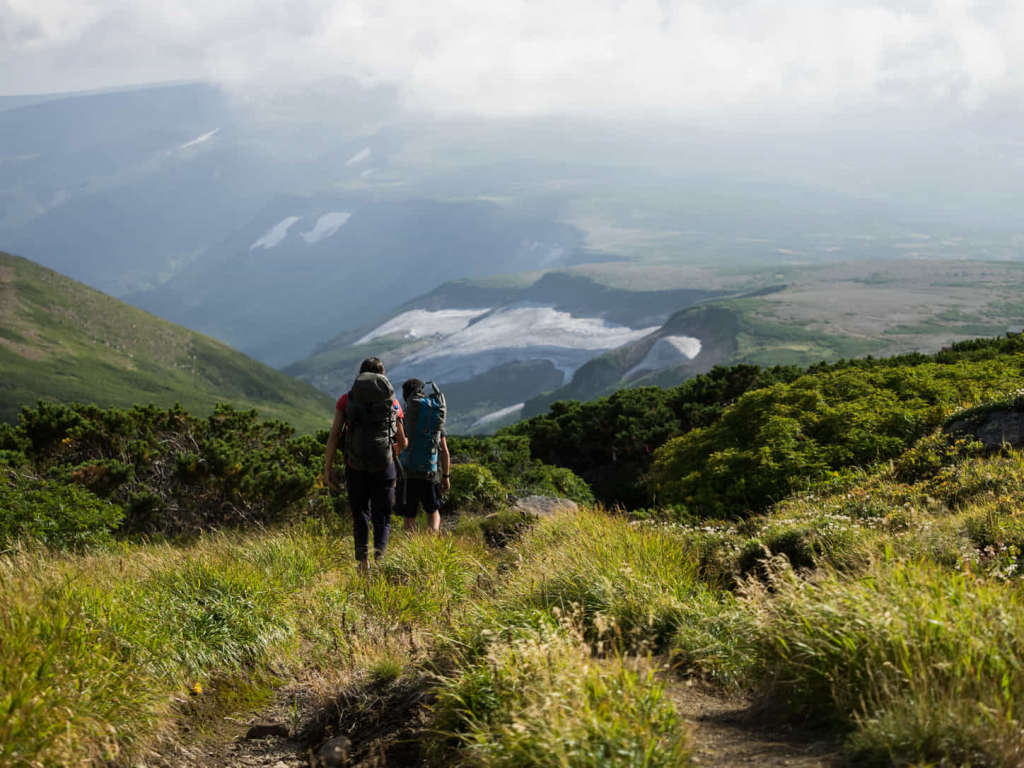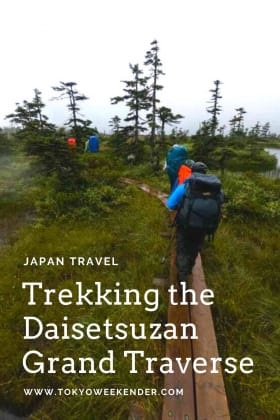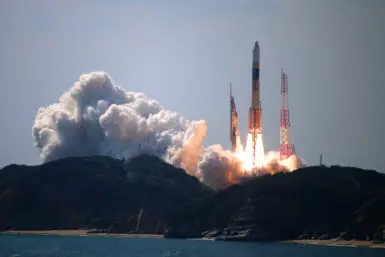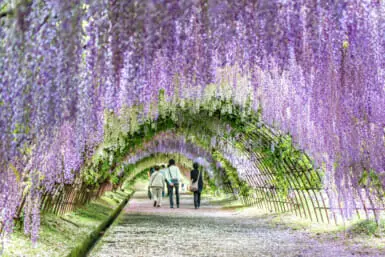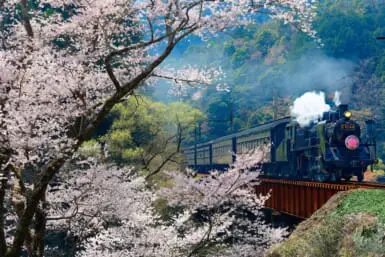Japan’s largest national park, home to the tallest mountain in Hokkaido. The “playground of the gods”, or kamui mintara, in Ainu culture. Many superlatives and claims to fame surround Daisetsuzan, but one stands above them all. Its nature is incredibly wild and beautiful.
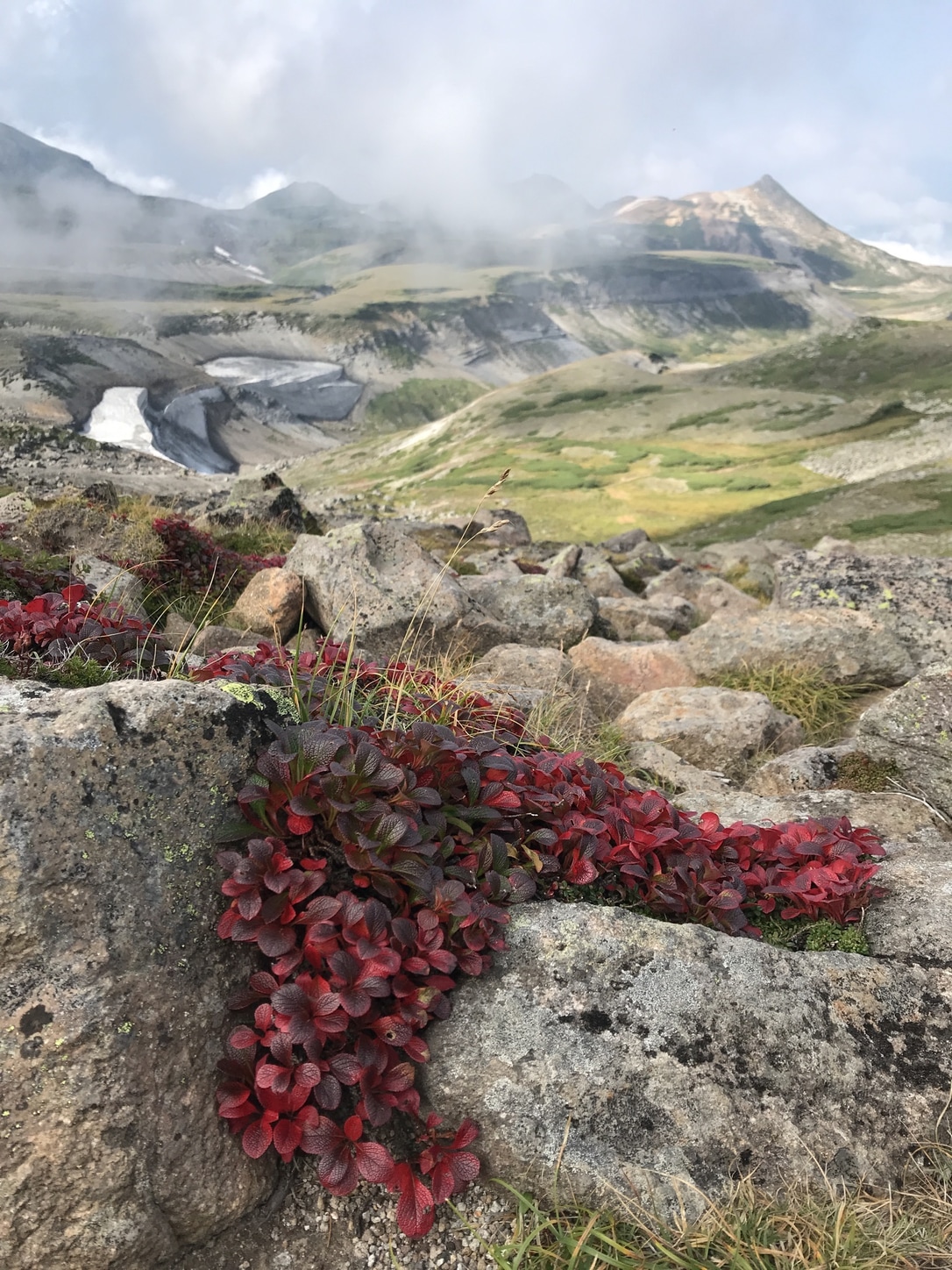
© Francesco Bassetti
As its Japanese name, which means “great snowy mountains” suggests, this is a skiing paradise. Yet especially in the summer, when Tokyo can feel like a giant steam bath, Daisetsuzan National Park – like the rest of Hokkaido – offers a welcome cooler and drier refuge.
Out of the many trails its 226,764 hectares have to offer, one in particular makes for tales of greatness: the Grand Traverse. A four-day itinerary from the foot of Asahidake (2,291 meters) – the island’s highest peak – to the bottom of Tokachidake (2,077 meters), which, like its taller cousin, is also an active volcano.
Trekking the Daisetsuzan Grand Traverse
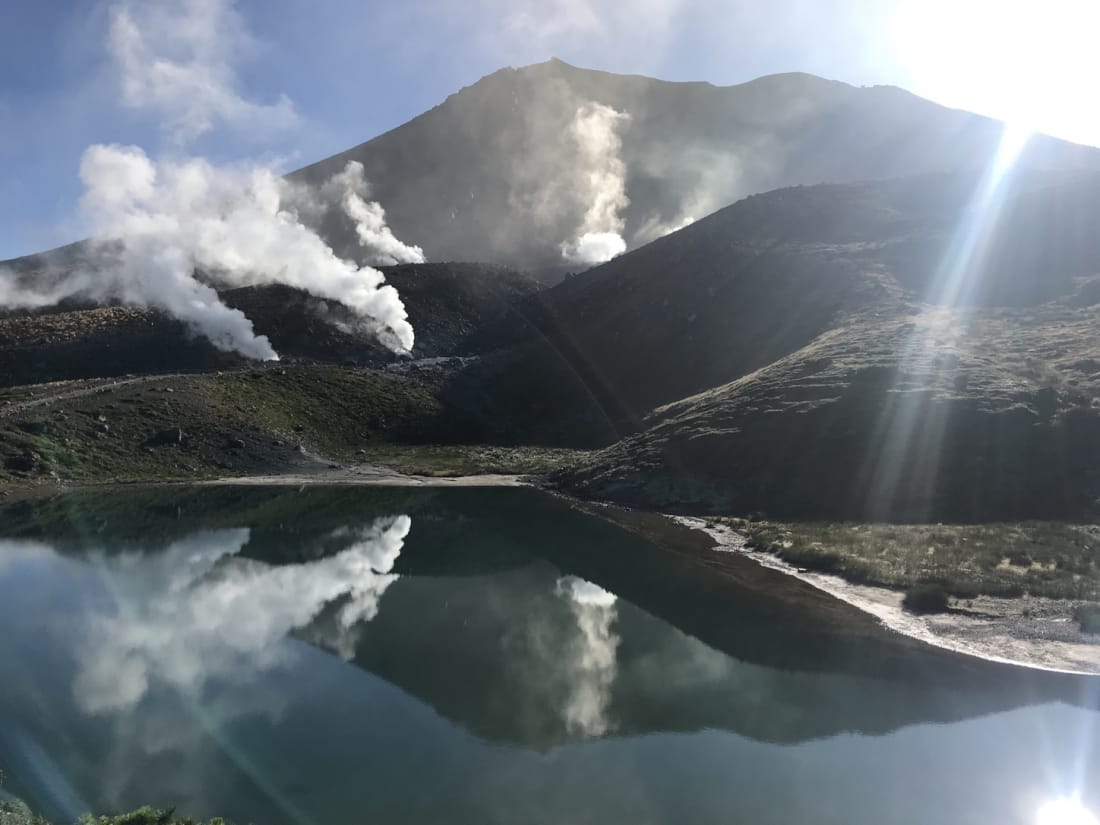
© Francesco Bassetti
Right from the onset, just uphill from the Sugatami ropeway station (using the ropeway saves a good portion of the climb up Asahidake), the first mesmerizing view of the mountain appeared before us, reflected in the aptly named Sugatami or Sapphire pond. Continuing up the volcano’s slope, billowing plumes and sands the color of Mars reminded us of the immense power lying beneath our feet.
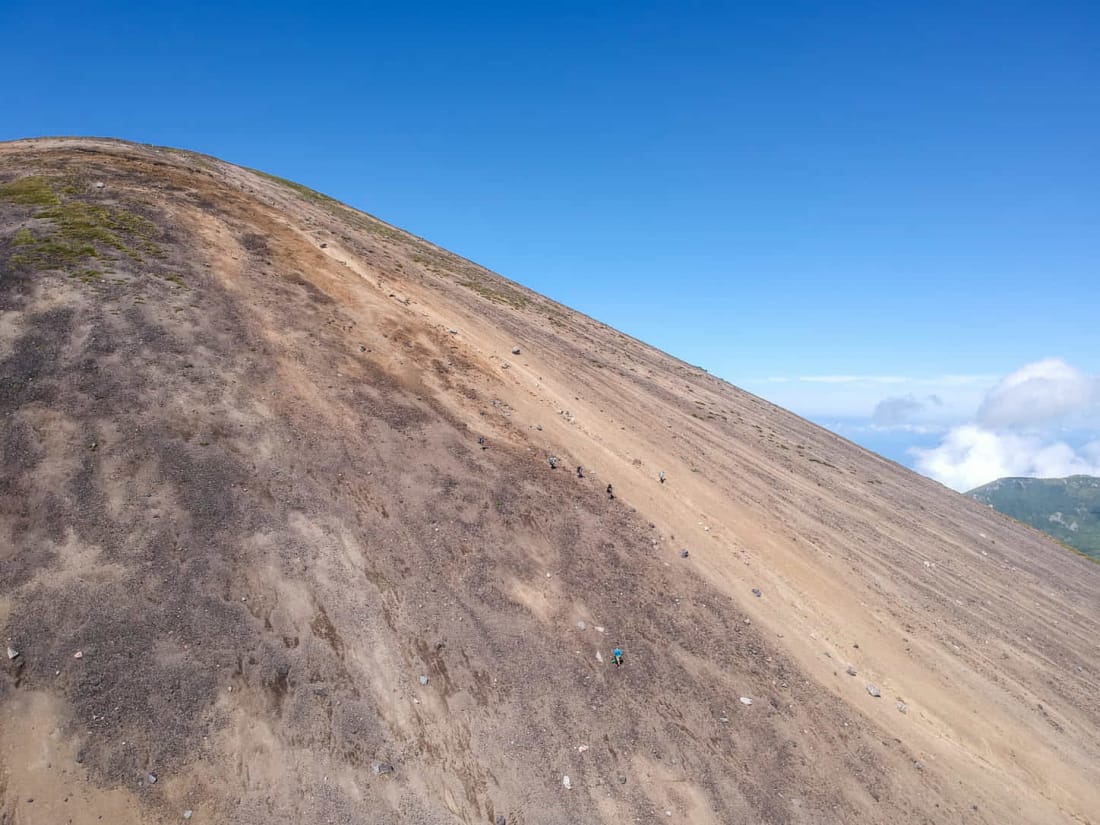
© Rob Thomson/Hokkaido Wilds
From the top of Asahidake, we got our last glimpse of civilization, turning our back on the comfort of mountain towns and onsens to enter a wild, wind-swept terrain. The landscape here onwards is ever-changing, with anything from snow patches to slopes of dark, volcanic rock – both of which we enjoyed sliding down. The glaring sun and blue sky made the colors spectacularly vibrant, especially the yellow sulphur streams of Ohachi-daira crater’s “poison onsen” (which we admired from a safe distance). Via gentle descents and ascents, we reached the Hakuundake campsite near a hut under renovation.
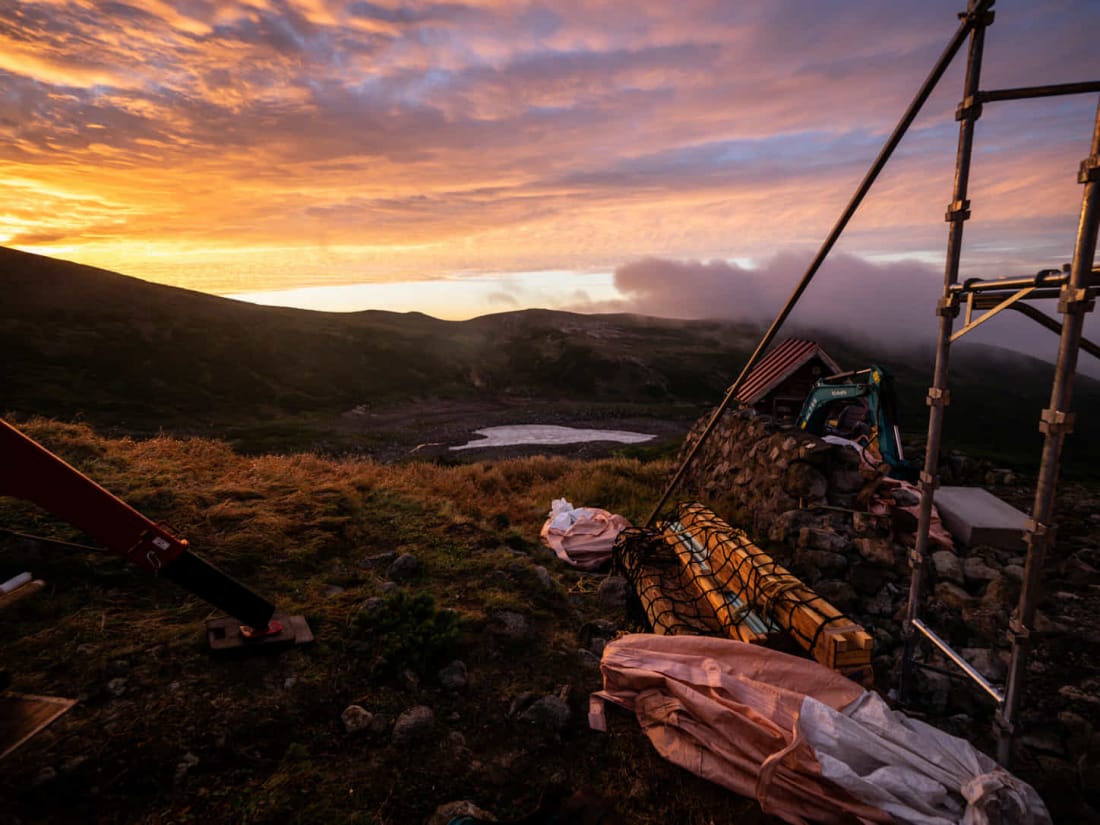
© Rob Thomson/Hokkaido Wilds
This proved to be a magical spot for the sunrise at the outset of the second day. Accompanied by the gentle, pastel-like colors of dawn, we set off and trekked across Takanegahara plateau, renowned for its summer flowers and autumn colors. Multiple mountain ranges can be seen from here, often enveloped in a soft sea of clouds.
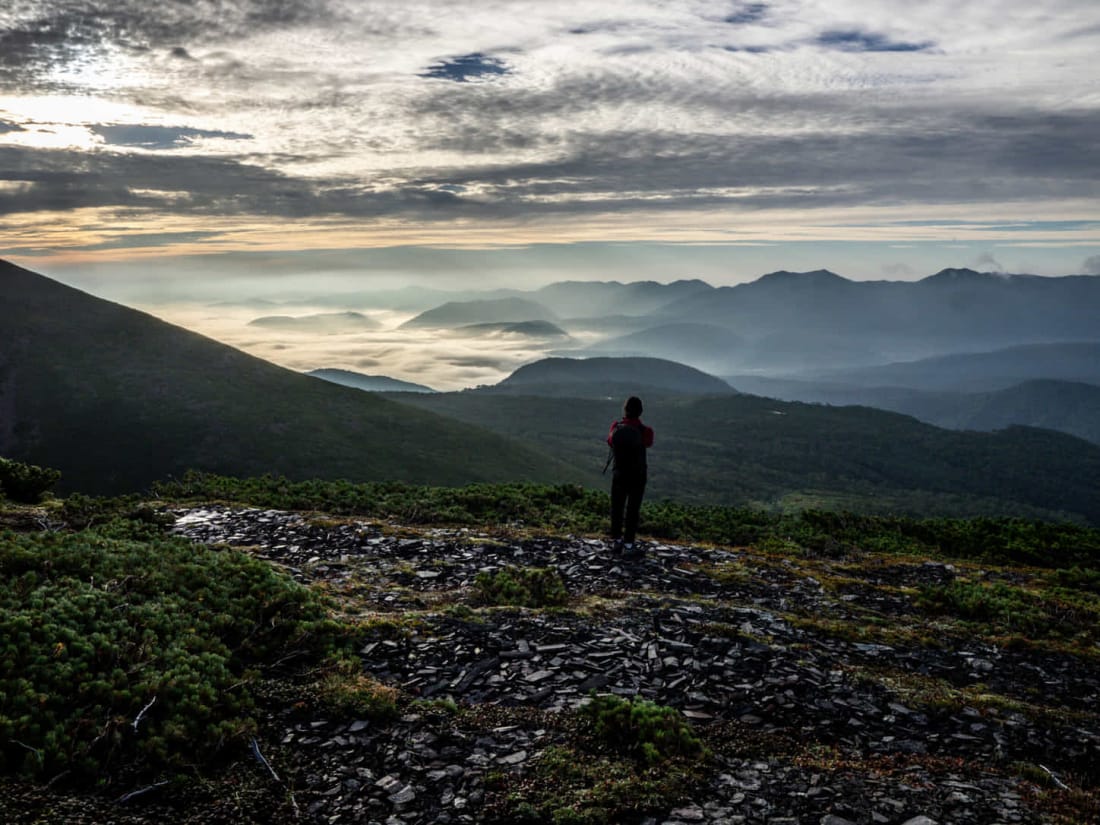
© Rob Thomson/Hokkaido Wilds
We continued the traverse crossing vast sections of wetlands on wooden runways that, though in need of maintenance, make for easier walking and protect the soil and vegetation. The full day of trekking went by quickly as we marveled at our guides’ explanations about the Ainu’s connections to this area, known as the “playground of the gods” – a name that evokes images of Ainu gods, the creatures inhabiting this land, convening in its vast expanses.
We also learned about the abundant flora, which is known for its dramatic seasonal colors, and unique fauna, including animals such as the Ezo deer and Yezo pika – best known as Pikachu rather than an indigenous deity – as well as the loved and feared Ezo bear. With binoculars in one hand and bear spray in the other, we searched the landscape for bears to no avail, though rejoiced at the sight of their excrement. Eventually, we reached the Hisago-numa pond campsite, where a hut is also located.
A Beautiful Hokkaido Escape
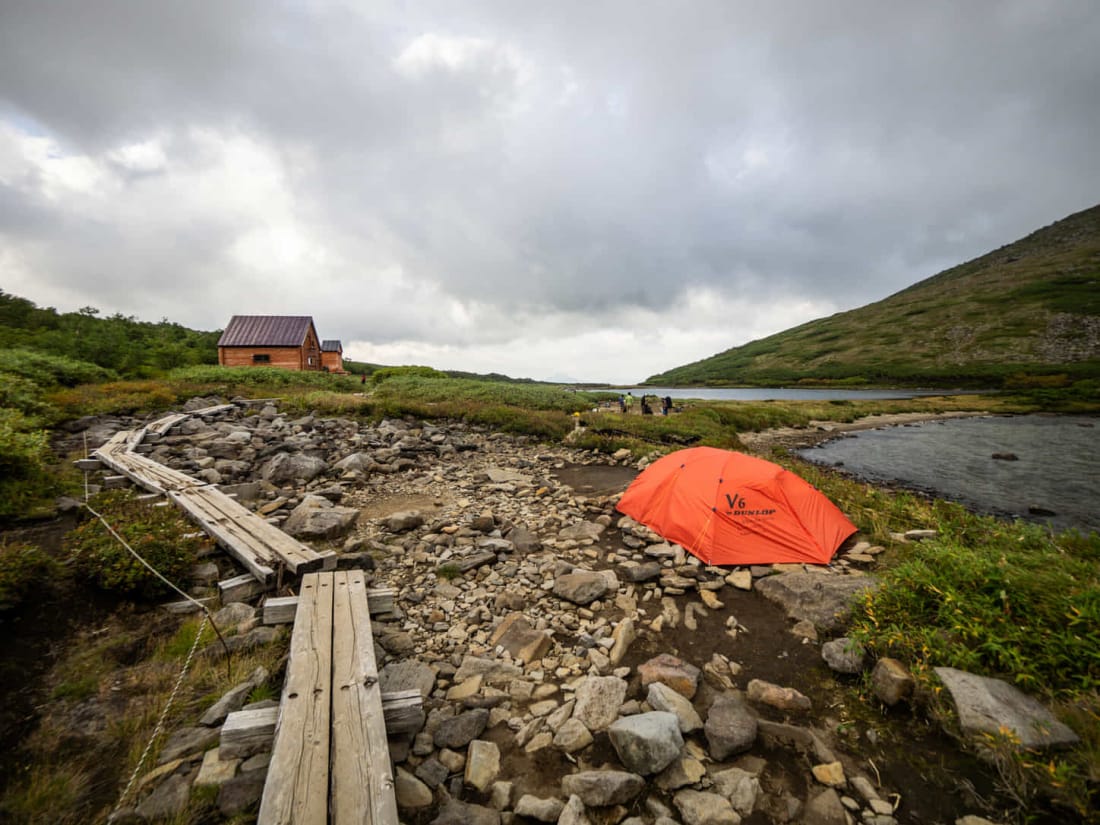
© Rob Thomson/Hokkaido Wilds
Although the Daisetsuzan’s relatively mild elevation gains and open terrain give a certain sense of security, weather here can change fast. We were woken on the third day by our tents buckling under strong winds, rudely slapping us in the face. As we set off on the escape route, abandoning any hope of completing the traverse, rain didn’t so much as fall from the sky but came pounding at us horizontally.
Even in a single day, what may start off as clear blue skies can quickly turn into a harsh storm. In 2009, eight people caught in bad weather lost their lives in what became known as the Mount Tomuraushi incident, one of the deadliest in modern Japanese hiking history.
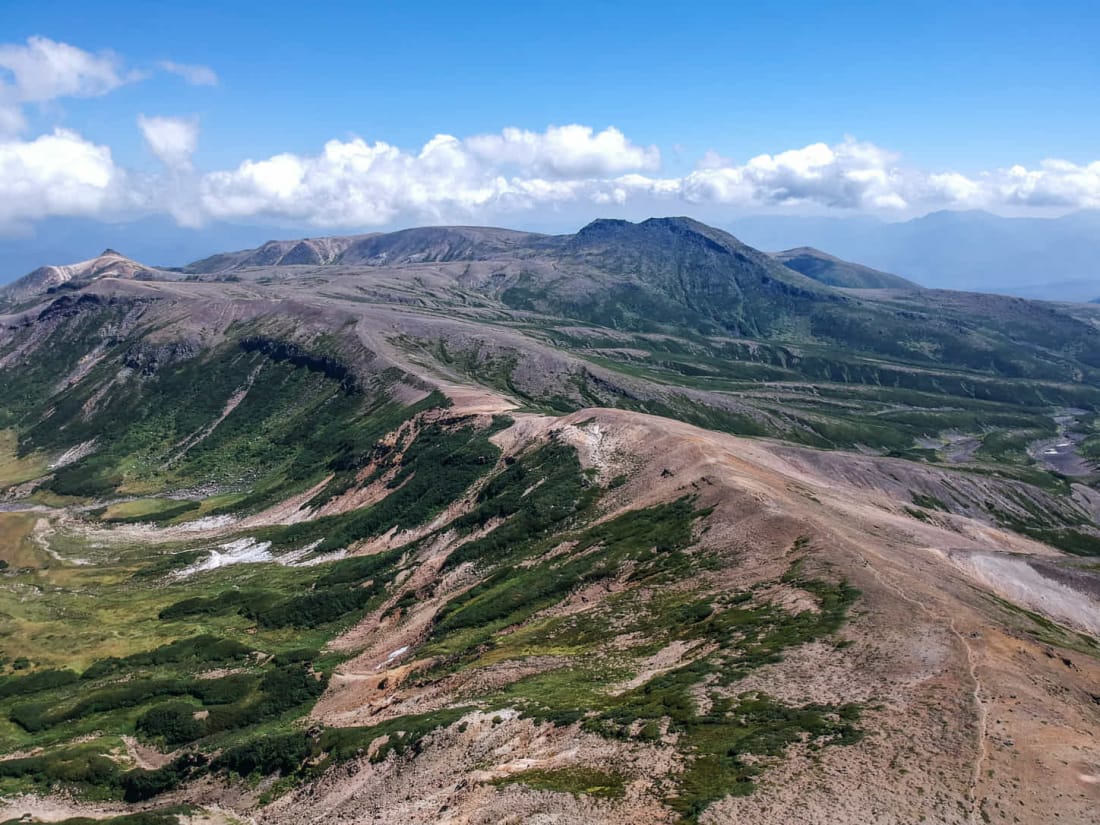
© Rob Thomson/Hokkaido Wilds
Experienced hikers looking to embark on the traverse solo can find a wealth of information on Hokkaido Wilds, a website that provides information in English about several outdoor activities throughout Hokkaido, including the trek described here. Alternatively, travel companies such as Nomad offer trekking experiences accompanied by certified guides.
We were fortunate enough to undertake the traverse led by Aoyama Michiko of Mountain Flow, one of the Hokkaido Mountain Guides Association’s few female guides. As we followed Michiko and the guiding team down the escape route to the Numa-no-hara trailhead, with visibility limited to the boots of the person in front of us, we were reminded of the value of their judgment and experience – beyond their great company and excellent cooking skills – in deciding when and how it was best to end our traverse.
We still got our fill of beauty that day, especially at Numa-no-hara tarn. As the wind died down to a low murmur and rain sent small ripples across the water, half submerged trees poked out from the mist for a scene worthy of the eeriest of horror stories.
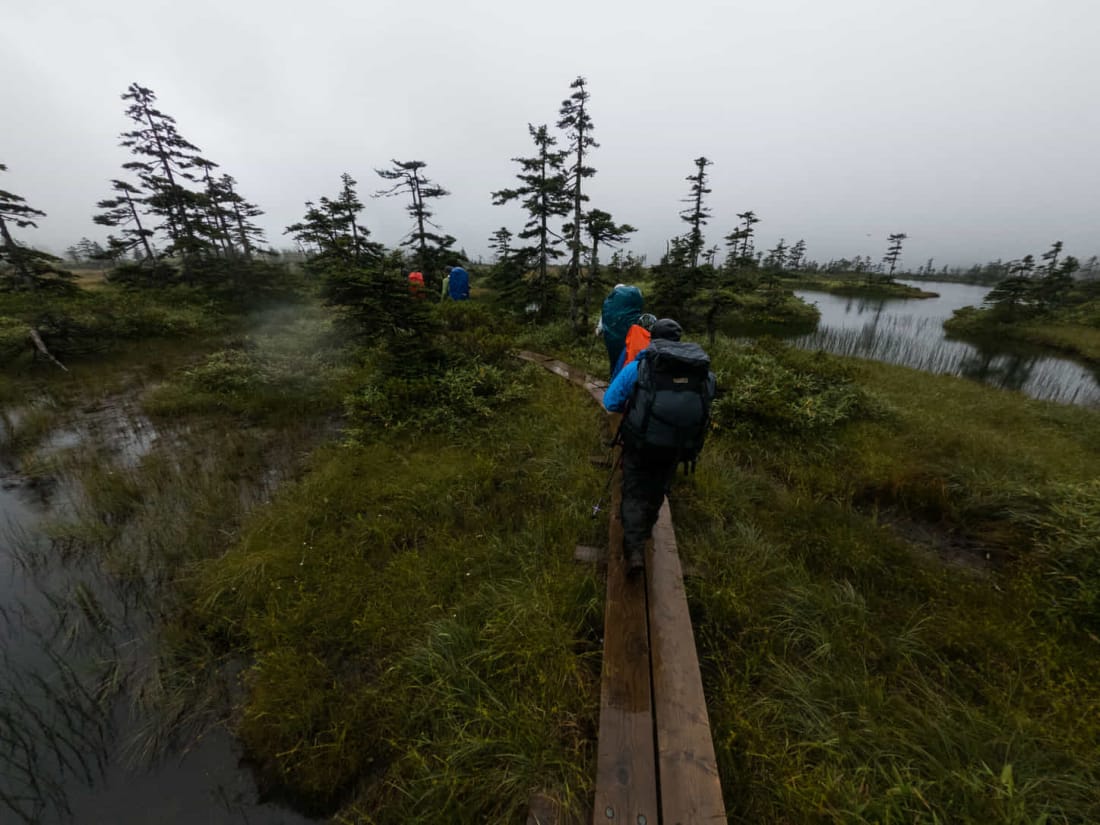
© Rob Thomson/Hokkaido Wilds
That evening, as we soaked in the onsen relaxing our tired legs and reminiscing about our adventures, we realized what a privilege it had been to dabble for a few days in the playground of the gods. As the hot steam rose from the bath, swirling out into the dark night, we felt content. The wind whispered in the trees and a few stars began to shine. It doesn’t get much better than this, we thought.
Francesco Bassetti contributed to this article
Feature image © Rob Thomson/Hokkaido Wilds

